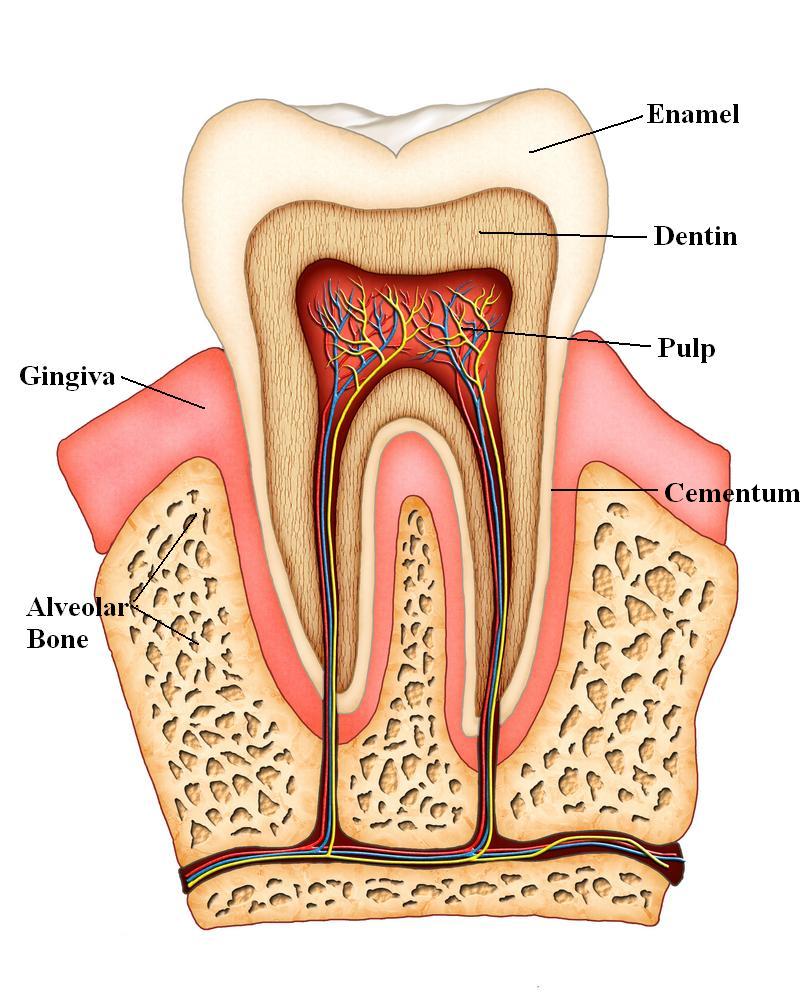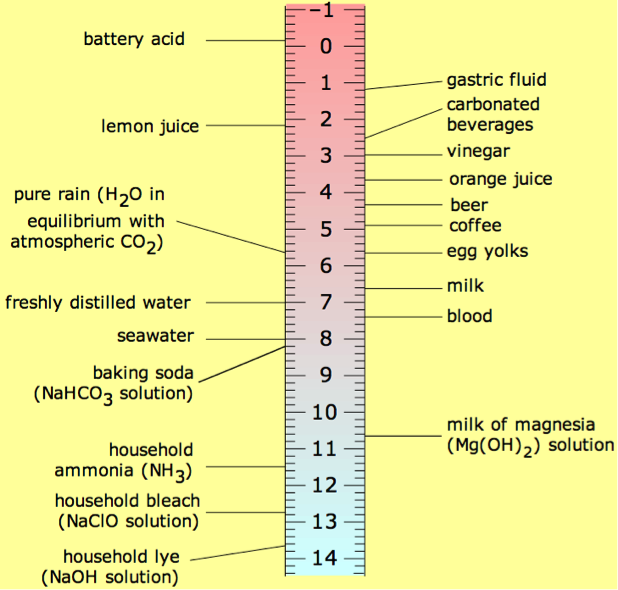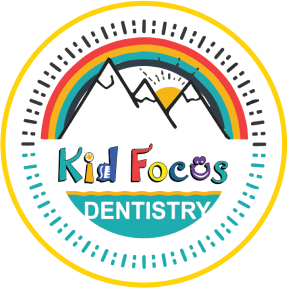Anatomy of a tooth/Childs diet
The Anatomy of a Tooth
To discuss the effects of fluoride we first need to understand a little bit about what makes a tooth. A tooth has three layers: the enamel, the dentin, and the pulp: which contains the nerve. The enamel and dentin are solid layers made of minerals and play crucial roles in protecting the pulp.

The Mineral Balance of a Tooth
A tooth needs to maintain a good mineral balance to stay healthy. Its surroundings, or the oral environment, strongly affect this balance. You might remember from high school chemistry that pH is a measure of acidity on a scale of 0 to 14.0. Water has a neutral pH of 7.0, while substances lower than 7.0 are acidic, and a solution with a pH greater than 7.0 is a base.
All of the food and drinks in a person’s diet influence the mouth to have a higher or lower pH. However, most children’s diets tend to make the oral environment more acidic. An acidic oral environment can cause teeth to demineralize, in which the enamel and dentin weaken and dissolve away. As the outermost layer, the enamel is the most important in protecting the tooth. While it is the hardest substance in the human body, the enamel can start to dissolve at a pH of 5.2. The next layer is the dentin, which will dissolve at the pH of 6.9.
In an ideal oral environment, saliva plays a crucial role in protecting the teeth. Saliva remineralizes or restores the mineral balance, of teeth that can be lost during normal wear and tear. If remineralization cannot occur after the enamel and dentin dissolve, cavities will develop.

What’s in your Child’s Diet?
The average child’s oral environment tends to be very acidic because of frequent consumption of highly acidic food and drinks. For example, most fruits and juices have a pH near 4.0 or 5.0. Worse, most sports and soft drinks have a pH around 3.0. Keeping in mind that water has a neutral pH of 7.0, it follows that frequent consumption of many beverages will cause a lower pH in a child’s mouth. This is where fluoride supplements become a crucial tool in the fight against childhood cavities. Fluoride helps the remineralization process via two different delivery mechanisms: systemic and topical.


